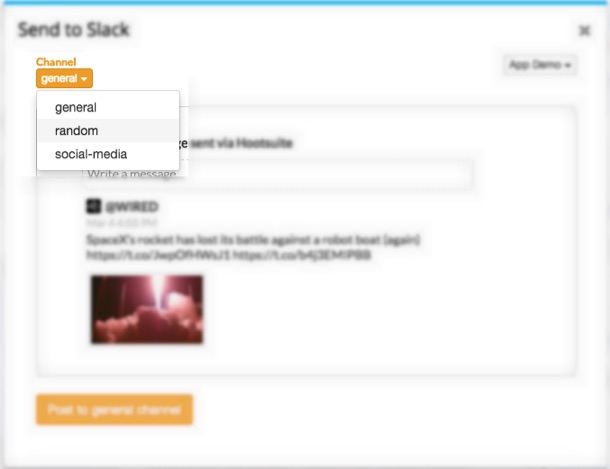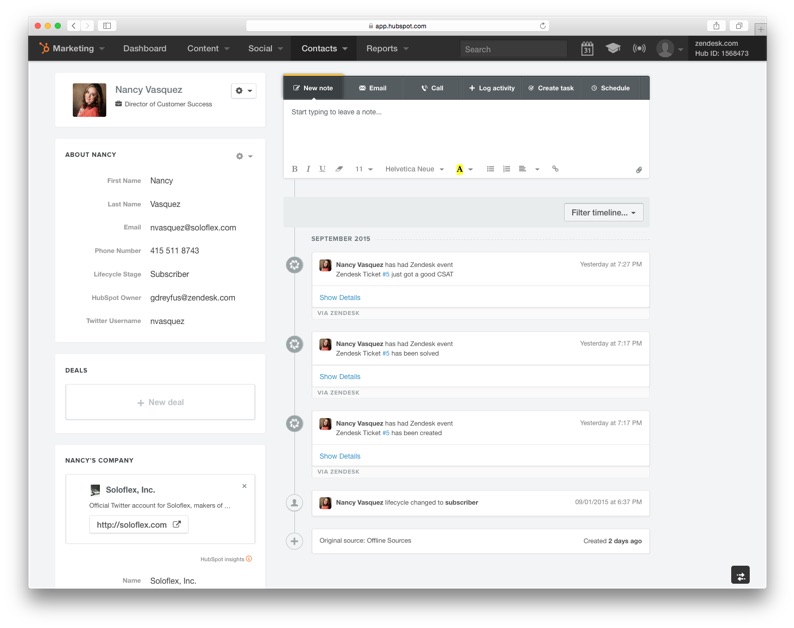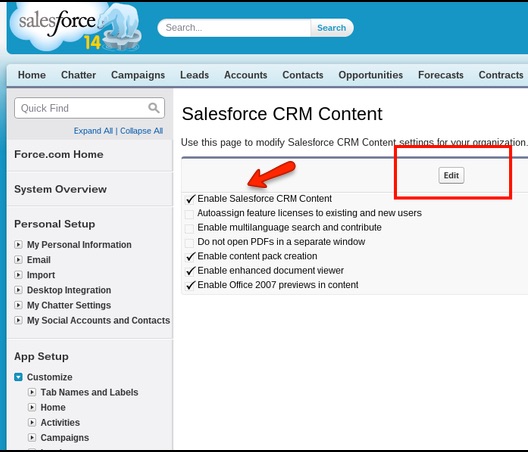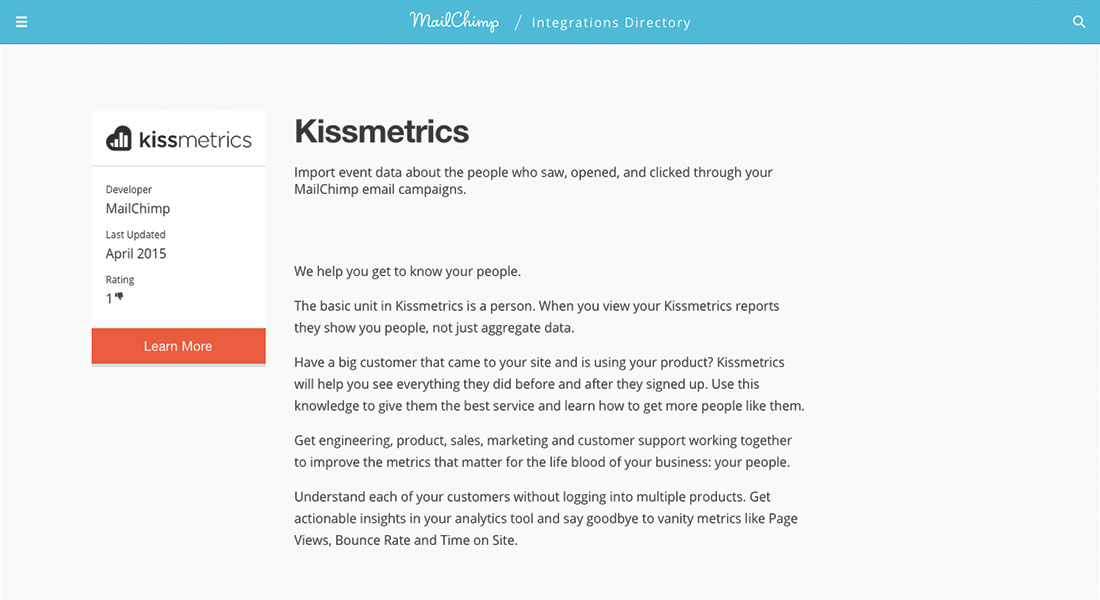Software that doesn’t play nice with others is like having a TV with no inputs – it works fine on its own, but if you can’t connect your PS4, Chromecast, or Apple TV, you’re stuck with basic cable.
Now, imagine if Salesforce couldn’t connect with your email, accounting, or customer service apps? You’d have a hard time organizing your client communications, consolidating your sales pipeline, or keeping track of your customer support queries.
Having the right integration for your marketing software can extend its functionality, eliminate duplicate work, and give you more insight into how your marketing campaigns are working.
But it’s not just about integrating your marketing stack– there are a ton of other different software types that you can integrate with to help improve your marketing campaign success, whether that be to target the right users, communicate better with prospects or clients, or get more in-depth metrics about the performance of your campaigns.
Below I’ll go through 5 ways that you can integrate your marketing software with the other software in your stack to maximize the impact of your marketing campaigns with minimal effort.
1. Social Media and Team Collaboration
As an integral part of any marketing strategy, social media can help promote content, connect with customers, and engage employees. It’s this last bit that’s seen a big push lately, with companies pushing for social advocacy programs that encourage employees to share content within their own social media circles for better brand recognition and employee engagement.
But before you invest in a social advocacy tool, you might consider using something like collaboration tool Slack for a test run.
With Slack integrations available for many social media tools like HootSuite, you can share content directly with your teams, communities, and channels.
Let’s say you’re a marketer for a SaaS company.
With HootSuite, you can send social messages from your dashboard to your team’s designated Slack channel for social media, which can be used as a depository where your staff can access content to share on their own social networks. Maybe you’ve just read a really interesting article about the top SEO predictions for 2016. You can send that article to your social media channel, where your team can share it on their LinkedIn, Facebook, or Twitter profiles.

The same can be done for related communities outside of your organization, where you can send your content to give it more visibility and more brand exposure in your industry.
2. Marketing Automation and Customer Service
Recording customer interactions at every step of the journey without any integrations can be exhausting if you have a lot of different touch points. It also makes it more difficult to target the right customers with the right marketing messages if you don’t know what their previous interactions with you have been. This is where a customer service integration with your marketing automation software can come in handy.
Take HubSpot as an example. HubSpot integrates with customer support solution Zendesk, creating a timeline on each customer’s contact page to show every interaction that’s taken place with that customer. This includes any support tickets recorded in Zendesk that may have an impact on future communication with that customer.

Once Zendesk ticket information is integrated, you can create targeted lists based on ticket tags that’ll let your marketing team send marketing materials related to specific customer needs. Using the same SaaS company example, you could target all of your customers that have submitted a support request for the same bug, sending them details of a new update that addresses the problem, or even a discount on their next month’s subscription.
This integration will also benefit the sales team by giving more access and visibility of support interactions to help move clients in the right direction along the sales pipeline.
3. Content Marketing and CRM
While it’s a good idea to keep content and sales separate when it comes to the creation process, you can take advantage of that relationship when it comes to leveraging content to foster sales.
Content marketing tool Kapost, which lets you create, edit, and shares posts, will integrate with Salesforce’s CRM so that you can automatically publish posts to Salesforce’s social network, Chatter, once they’re live. From there, your sales team will be able to see what’s been published and either share it on their own social network, or use it as part of their sales process. This includes any published content types like articles, videos, or PDFs, which can be saved to Salesforce libraries.

For any content published to Salesforce, Kapost will track its number of social shares or downloads (if it’s a PDF) too.
4. Email Marketing and Analytics
Many email marketing suites offer their own set of analytical tools to track campaign performance, but if you connect it with more advanced analytics suites, you can get even better insight into your campaigns.
The MailChimp-Kissmetrics integration is a great example of how this power plays itself out in action. Aside from metrics like open and click-through rates available in Mailchimp, an integration with Kissmetrics will not only record those users in the app via their email address, but will let you track them as they click-out of your campaign and make their way around your website.

Because Kissmetrics shows activities attached to real people, not just numbers, you can also use this user activity data from Kissmetrics to create mailing lists in MailChimp. For example, if you’d like to send a campaign to potential customers who’ve abandoned their purchase at checkout, you can extract that data from Kissmetrics using its People Search function and use it to create a targeted email list in MailChimp.
5. Messaging Apps and E-commerce (Messenger and Shopify)
Consumer messaging apps are on the rise when it comes to connecting with customers, whether that be for customer support, e-commerce, or– you guessed it– marketing. If you want to start toying with the idea of using a messaging app to connect with customers, why not start with Facebook?
Messenger’s already being used by companies like ShopSpring, Everlane, and Zulily to help customers make purchases from their online stores via the app, and with a Shopify integration already in place, you can connect with customers throughout every point of the purchasing process.

With the Messenger-Shopify integration, you can help customers complete their transaction, automate follow-ups and send tracking details on their order, and send promotional deals post-purchase.

Sending communication to your customers in a place where they’re already spending tons of time is key to the successful future of customer communication.
Being able to reach out to customers at various touch points throughout the customer journey using messaging apps will only continue to expand in functionality and integrations as more companies hop on board of the messaging app for business trend.
Integrate to Convert
There are more integrations available than just those in your marketing stack. Dig deep into your software pool to see how you can integrate not just marketing, but all of the software that you’re using to ramp up your marketing efforts and better target your customers for higher conversion.
About the Author: Suzie is a writer and researcher at GetApp focusing on the social side of business. She specializes in writing about content marketing, email marketing, and CRM. Aside from musing about B2B software, she’s also project manager for GetApp’s Category Leader rankings, which highlight the top 25 cloud-based business apps across different industries.